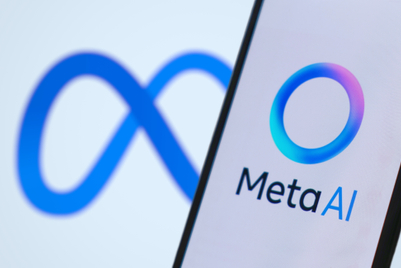
The digital marketing landscape is increasingly complex, and the eight-second attention span of consumers is only making it harder to break through the noise.
Add in a proliferation of new advertising and marketing software platforms, and no wonder confusion around choice is increasing among CMOs. It doesn’t help that vendors all use the same phrases for what they do, even if their solutions vary wildly.
Marketers want to be efficient; automate complex and onerous tasks; and deal with as few vendors as possible.
Their challenge is significant. They need to manage larger data sets and oversee a dramatic increase in digital consumer activity, while maintaining a sharp ruler over costs. The answer is to find the one platform that meets most of their needs.
On the other hand, consumers simply want a seamless experience, or a targeted advertising message that is useful to them. They only see one digital world, and they expect the technology to work for them and provide great value, regardless of the device they are using.
For marketers, they need to seek out the platforms that realize this new consumer expectation, and can effectively handle the mass daily volume of biddable search, social, display, and in-app advertising inventory opportunities.
The key actions that people take every day are searching for something of interest at a particular moment, in order to contribute towards a purchase decision, or checking their social network feeds.
Paid search is the most programmatic channel of all the advertising software suites, because it has been in operation for more than a decade—far longer than any of the platforms. The agency world and the brands both know it works well, and the main concern is to successfully manage a Google structural change.
Search is trusted, proven, an essential utility for consumers, and also delivers the best intent data in the market.
Add in data from Facebook to include the social advertising layer, and the firehose of information reaches Big Data proportions, on a daily basis.
Savvy advertisers and agencies also need to bring in Google product listing ad click data and in-app mobile consumer activity data, as well as optimise their search and social data for the mobile screen.
It now makes sense that search and social will merge and exist in the one platform that any agency can manage on behalf of the brand advertiser. The signals connection is very strong and needs to be captured.
The first-mover sectors—travel, online retail, automotive, and other e-commerce players—know that search and social is more than just a competitive direct response game. They have to be top of page in search, or exist on your Facebook page, as a branding play. In Asia this is more crucial than any other market, because it’s the most advanced mobile-first market in the world.
The number of new daily auctions for keywords, the datasets available for the interaction points between search and social, and click data, are all vital to understanding what is moving consumers to make actual purchases.
The best way to measure all of these interactions, conversion opportunities, and intent-based interest is to automate and consolidate.
The optimization challenge now goes beyond search and social to include display inventory across desktop and mobile. Reaching people while they are consuming premium content with the most relevant messaging is a great opportunity, and one that can only be delivered when all channels are connected in a single platform.
Data whizzing into and across these platforms is forming a customer view that can lead to better ad placement and consumer engagement. Brands and agencies know they need better data and they need it fast. They must also work out how to make their investments work across many devices and channels, and how to optimize their paid media.
Search is clearly the world’s biggest expression of intent. From a commercial perspective, this equates to the key metric: purchase intent. Social advertising data delivers an immensely deep and broad set of information.
Display advertising data provides context on the topics that consumers are interested in. And mobile data tells us where people are, which can be a great indicator of current mindset and likelihood to take a particular action.
By using these powerful marketing channels together, the opportunities as a marketer are limitless, underpinned by the scale abilities of algorithms. It could mean modeling the improvements in search marketing from running social advertising campaigns. This has been proven to improve search clickthrough ratse and to lower the overall cost of conversion. It could mean capturing intent on search and then buying these precise intenders on social and display platforms. It could mean creating audience retargeting segments that drive higher customer lifetime value. While the amount of available engagement channels increases, the marketer will seek to achieve more with fewer platforms.
The opportunities to better target and reach consumers have major implications for marketers; there is no more set-and-forget with digital campaigns. The brands and their digital agencies are moving to daily optimization, continuous testing, and an always-on environment, whereby businesses trust their marketing department or agency to be right across all channels.
The best platforms will win, and marketers will consolidate their spend because they want to lower management costs, ensure their digital agency is efficient, and get the best return on their digital marketing spend.
Yukihiko Imamura is managing director for Asia Pacific and Japan with Kenshoo


.jpg&h=334&w=500&q=100&v=20250320&c=1)
.jpg&h=334&w=500&q=100&v=20250320&c=1)
.jpg&h=334&w=500&q=100&v=20250320&c=1)




.png&h=334&w=500&q=100&v=20250320&c=1)


.jpg&h=268&w=401&q=100&v=20250320&c=1)





.png&h=268&w=401&q=100&v=20250320&c=1)
